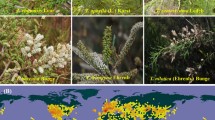Abstract
Raphanus sativus, a common cruciferous vegetable has been attributed to possess a number of pharmacological and therapeutic properties. This present study evaluated the protective effect of different parts of R. sativus such as root, stem and leaf obtained with a variety of extraction solvents against cell death and oxidative DNA damage induced by hydrogen peroxide (H2O2) in normal human lymphocytes. R. sativus extracts as such showed no cytotoxicity and genotoxicity to the lymphocytes at the tested concentrations. Of the different extracts, hexane extract of root and methanolic extract of stem and leaf showed significant protective effect against oxidative damage induced by 200 μM H2O2 in a dose dependent manner, as compared to cells exposed only to H2O2. Our results suggest that the protective effect afforded by R. sativus extract could be related to the presence of isothiocyanates and polyphenolics, as they possess significant capacity to remove reactive species by virtue of their ability to scavenge free radicals and induce antioxidant enzyme system in the cells.

Similar content being viewed by others
References
Barillari J, Cervellati R, Costa S, Guerra MC, Speroni E, Utan A, Iori R (2006) Antioxidant and choloretic properties of Raphanus sativus L sprout (kaiware daikon) extract. J Agric Food Chem 54:9773–9778
Barillari J, Iori R, Papi A, Orlandi M, Bartolini G, Gabbanini S, Pedulli GF, Valgimigli L (2008) Kaiware daikon (Raphanus sativus L) extract: a naturally multipotent chemopreventive agent. J Agric Food Chem 56:7823–7830
Beevi SS, Mangamoori LN, Gowda BB (2009) Polyphenolics profile, antioxidant and radical scavenging activity of leaves and stem of Raphanus sativus L. Plant Food Hum Nutr (in press). doi:10.1007/s11130-009-0148-6
Block G, Patterson B, Subar A (1992) Fruit, vegetables and cancer prevention: a review of the epidemiological evidence. Nutr Cancer 18:1–29
Collins AR (1999) Oxidative DNA damage, antioxidants and cancer. Bio Essays 21:238–246
Dimitrios B (2006) Sources of natural phenolic antioxidants. Trends Food Sci Technol 17:505–512
Esaki H, Onozaki H (1982) Antimicrobial action of pungent principles in radish root. Eiyo To Shokurya 35:207–211 (in Japanese)
Fukumoto LR, Mazza G (2000) Assessing antioxidant and prooxidant activities of phenolic compounds. J Agric Food Chem 48:3597–3604
Ghayur MN, Gilani AH (2005) Gastrointestinal stimulatory and uterotonic activities of dietary radish leaves extract are mediated through multiple pathways. Phytother Res 19:750–755
Gilani AH, Ghayur MN (2004) Pharmacological basis for the gut stimulatory activity of Raphanus sativus leaves. J Ethnopharmacol 95:169–172
Halliwell B (1994) Free radicals and antioxidants: a personal view. Nutr Rev 52:253–265
Halliwell B, Gutteridge JMC (1999) Free radicals in biology and medicine. Oxford University Press, Oxford
Hecht SS (1999) Chemoprevention of cancer by isothiocyanates, modifiers of carcinogen metabolism. J Nutr 129:768S–774S
Johnson MK, Loo G (2000) Effects of eigallocatechin gallate and quercetin on oxidative damage to cellular DNA. Mutat Res 459:211–218
Kapoor LD (1990) Hand book of ayurvedic medicinal plants. CRC press, Boca Raton
Kim D, Jeond S, Lee Ch (2003) Antioxidant capacity of phenolic phytochemicals from various cultivars of plums. Food Chem 81:321–326
Mosmann T (1983) Rapid colorimetric assay for cellular growth and survival: Application to proliferation and cytotoxicity assays. J Immuno Methods 65:55–63
Nadkarni KM (1976) Indian materia medica. Popular Prakashan, Bombay
Nakamura Y, Iwahashi T, Tanaka A, Koutani J, Matsuo T, Okamoto S, Sato K, Ohtsuki KJ (2001) 4-(Methylthio)-3-butenyl isothiocyanate, a principle antimutagen in daikon (Raphanus sativus; Japanese white radish). J Agric Food Chem 49:5755–5760
Papi A, Orlandi M, Bartolini G, Barillari J, Iori R, Paolini M et al (2008) Cytotoxic and antioxidant activity of 4-methylthio-3-butenyl Isothiocyanate from Raphanus sativus L. (Kaiware Daikon) sprouts. J Agric Food Chem 56:8750–8883
Rice-Evans CA (1995) Plant polyphenols: free radical scavengers or chain-breaking antioxidants? In: Rice-Evans C, Halliwel B, Lunt GG (eds) Free radical and oxidative stress: environments, drugs and food additives. Portland Press, London, pp 103–116
Takaya Y, Kondo Y, Furukawa T, Niwa M (2003) Antioxidant constituents of radish sprout (Kaiware-daikon), Raphanus sativus L. J Agric Food Chem 51:8061–8066
Tice RR, Andrews PW, Hirai O, Singh NP (1990) The single cell gel (SCG) assay: an electrophoretic technique for the detection of DNA damage in individual cells. In: Witmer CM (ed) Biological and reactive intermediates IV. Plenum Press, New York, pp 157–164
Urquiaga I, Leighton F (2000) Plant polyphenol antioxidants and oxidative stress. Biol Res 33:55–64. doi:10.4067/S0716
Verhoeven DT, Verhagen H, Goldbohm RA, Van den Brandt PA, Van Poppel G (1997) A review of mechanisms underlying anticarcinogenicity by brassica vegetables. Chem Biol Interact 103:79–129
Wang L, Wei L, Wang L, Xu C (2002) Effects of peroxidase on hyperlipidemia in mice. J Agric Food Chem 50:868–870
Zhang Y, Cho CG, Posner GH, Talalay P (1992a) Spectroscopic quantitation of organic isothiocyanates by cyclocondensation with vicinal dithiols. Anal Biochem 205:100–107
Zhang Y, Talalay P, Cho CG, Posner GH (1992b) A major inducer of anticarcinogenic protective enzymes from broccoli: isolation and elucidation of structure. Proc Nat Acad Sci USA 89:2399–2403
Zielinski H, Koztowska H (2003) The content of tocopherols in cruciferae sprouts. Pol J Food Nutr Sci 12:19–23
Zielinski H, Frias J, Piskuła MK, Kozlowska H, Vidal-Valverde C (2005) Vitamin B1 and B2, dietary fiber and minerals content of Cruciferae sprouts. Eur Food Res Technol 221:78–83
Acknowledgments
This study was supported by a funding under the Technology Education Quality Improvement Program (TEQIP) by World Bank to Centre for Biotechnology, Institute of Science and Technology, Jawaharlal Nehru Technological University, Hyderabad, India. S.S. Beevi acknowledges the financial support from CSIR in the form of a Senior Research Fellowship. There is no conflict of interest which should be disclosed.
Author information
Authors and Affiliations
Corresponding author
Rights and permissions
About this article
Cite this article
Beevi, S.S., Mangamoori, L.N. & Reddy, L.V. Protective effect of Raphanus sativus on H2O2 induced oxidative damage in human lymphocytes. World J Microbiol Biotechnol 26, 1519–1525 (2010). https://doi.org/10.1007/s11274-010-0328-4
Received:
Accepted:
Published:
Issue Date:
DOI: https://doi.org/10.1007/s11274-010-0328-4




